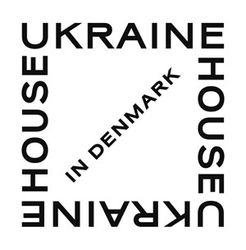Ukraine House in Denmark introduced the Ukrainian Easter traditions to Danes
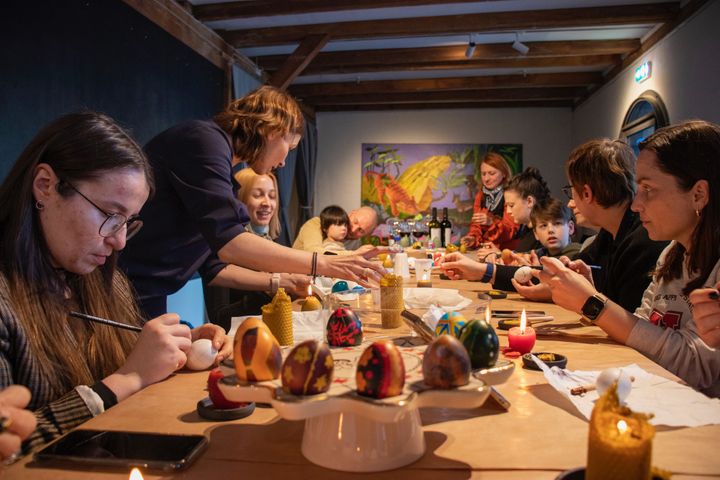
Easter is one of the biggest celebrations in Ukraine and has deeply rooted traditions and rituals of preparing for this Holy day such as fasting, preparing the household, decorating eggs with beeswax painting technique (pysanky), preparing special Easter bread and basket for blessing, as well as cooking brunch full of peculiar Easter dishes based on traditional recipes, and enjoying the holidays filled with traditional spring songs and dancing etc.
During the Chat with Witnesses about Preserving Easter Traditions in Ukraine throughout history Lesya Ignatyk-Eriksen, Head of the Association of Ukrainians in Denmark reminded that during the Soviet Union Ukrainians were not allowed to celebrate Easter openly and go to church, otherwise people could be punished and even killed by communist regime of the XXth century.
“Later open terror was replaced by “alternative Soviet celebrations” and during Easter weekends people were forced to clean up the areas or participate in Communist party events: sporting competitions, lottery, movie days – anything to distract people from Easter. Despite any obstacles millions Ukrainians continued to celebrate “forbidden” Easter behind closed doors,” – says Lesya Ignatyk-Eriksen.
Despite its tough past and nowadays war with Russia Ukraine managed to maintain and develop its traditions, including Big Lent.
“In a time of war, Lent has transformed, Ukrainians sacrifice their desire for pleasures, postpone some materialistic needs such as buying a new car or going on vacation but they donate, donate, donate. It became a national “sport” – to donate as much and as quickly as possible to the needs of the army and volunteers,” says a Ukrainian writer, podcaster, translator, producer Nadiyka Gerbish.
Iryna Ignatenko, ethnologist, author, podcast host, associate professor, University of Copenhagen admitted that more people attend church on Easter even though not all may be religious. The tradition of blessing food by a priest is very popular all around Ukraine. Back in the past people brought baskets with baked meat, cheese, salt, poppy seeds, garlic, decorated eggs “pysanky”, Easter bread “paska” etc. Nowadays it could be any food which people will eat on Easter brunch with the family but pysanky and paska are still the most important attributes.
The visitors of Ukraine House in Denmark tasted a classic Easter bread paska. They also participated in several master classes and workshops of decorating eggs. A Ukrainian artist Andriy Muzychenko showed and explained the meaning of the most common elements which Ukrainians painted on eggs for centuries – the sun, stars, crosses, spirals etc.
Another workshop was curated by a Ukrainian artist Olesya Drashkaba who introduced the guests PYSANKA – the Ukrainian name for a wax-resist type egg, which comes from the verb “pysaty” (писати), meaning "to write", as the patterns are written onto the egg with beeswax, not painted on.
The practice of pysankarstvo (the art of making pysankas) was widespread throughout Ukraine and every region had its own patterns. Ukrainians have been decorating eggs, creating these miniature jewels, for countless generations. There is a ritualistic element involved, magical thinking, a calling out to the gods and goddesses for health, fertility, love, wealth.
“Painting with wax is the most understandable meditation for me. A special atmosphere, a special slowing down because it’s impossible to make sudden movements, everything is very fragile. It is about special aromas and special restrictions, because wax writing has certain technical features, which are fun to play with. And the main thing is that the Easter egg perfectly teaches the combination of traditional and modern, as well as tension and relaxation. It s the perfect way to fight perfectionism and observe small and important improvements,” – Olesya Drashkaba.
Images
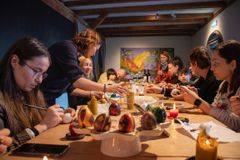

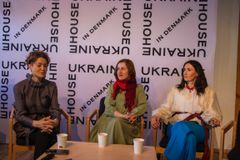


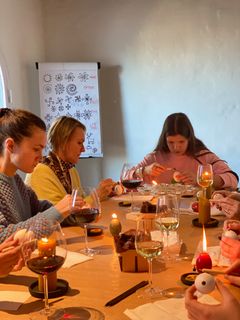
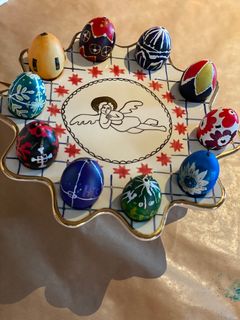
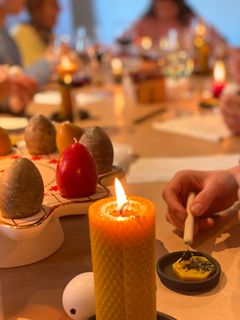
About Ukraine House in Denmark
The Ukraine House in Denmark is a civil society organisation of Ukrainian cultural diplomacy based in Copenhagen. Its mission is to form an enduring positive influence of Ukraine on Ukrainian-Danish cooperation, security, and lasting peace in Europe.
Subscribe to releases from Ukraine House in Denmark
Subscribe to all the latest releases from Ukraine House in Denmark by registering your e-mail address below. You can unsubscribe at any time.
Latest releases from Ukraine House in Denmark
Ukraine House i Danmark inviterer til koncert i anledning af Ukraines uafhængighedsdag11.8.2025 08:00:00 CEST | Presseinvitation
En musikalsk hyldest til Ukraines uafhængighedsdag — klange og melodier, der har formet nationen siden genoprettelsen af dens frihed og suverænitet i 1991. Programmet rummer værker af de anerkendte, nutidige ukrainske komponister Valentyn Sylvestrov, Victoria Poleva og Serhiy Zazhytko, side om side med en talentfuld ny generation: Roman Grygoriv, Serhiy Vilka, Andriy Merkhel og Yana Shlyabanska. Den ukrainske musik suppleres af værker af de danske komponister Per Nørgård og Carl Nielsen, som understreger de kulturelle bånd mellem Ukraine og Danmark. En del af koncerten er "A Musical Tribute to Ukrainian Independence" — et lyrisk potpourri af ikoniske ukrainske sange, der følger nationens kulturelle rejse fra begyndelsen af 1990’erne til i dag.
Ukraine House in Denmark præsenterer: "Uncurtained: Ukrainsk kunst i danske samlinger 1989-2023" udstilling31.7.2025 08:00:00 CEST | Presseinvitation
21. august – 23. november 2025 Kurateret af Kateryna Stukalova Ukraine House in Denmark er stolte af at kunne præsentere "Uncurtained: Ukrainsk kunst i danske samlinger 1989-2023", en skelsættende udstilling og et stort forskningsprojekt, der udforsker den rige, men ofte oversete, historie om dansk-ukrainske kulturelle relationer. Gennem ukrainske kunstværker erhvervet i private, offentlige og erhvervsmæssige danske samlinger i løbet af de sidste tre et halve årtier giver Uncurtained et unikt indblik i de kunstneriske og historiske bånd mellem de to nationer og beviser, at den nuværende stærke danske støtte til Ukraine ikke er en ny udvikling.
Ukraine House in Denmark Presents: “Uncurtained: Ukrainian Art in Danish Collections 1989-2023” Exhibition21.7.2025 08:00:00 CEST | Presseinvitation
August 21 – November 23, 2025 Curated by Kateryna Stukalova Ukraine House in Denmark is proud to present “Uncurtained: Ukrainian Art in Danish Collections 1989–2023”, a landmark exhibition and major research project exploring the rich, yet often overlooked, history of Danish-Ukrainian cultural relations. Through the lens of Ukrainian artworks acquired by private, public, and corporate Danish collections over the past three and a half decades, Uncurtained offers a unique perspective on the artistic and historical ties between the two nations and proves that current strong Danish support for Ukraine is not a recent development.
“The Ukrainian Model” — Rethinking Resilience for a New Era6.7.2025 10:29:48 CEST | Pressemeddelelse
Ukraine House in Denmark hosted Ukrainian civic strategist Yevhen Hlibovytskyi for a critical examination of how Ukraine is surviving the war—and what its experience reveals about the future of governance, democracy, and resilience in the 21st century. The event took place on June 24.
“Material Resistance: Ukrainian Design in Action” Exhibition: Ukraine House in Denmark at 3daysofdesign 202527.6.2025 08:00:00 CEST | Pressemeddelelse
Thank you to everyone who visited Ukraine House in Denmark during this year’s 3daysofdesign festival in Copenhagen. Since joining the festival in 2023, Ukraine House has become both a cultural landmark and a vital platform for showcasing contemporary Ukrainian design. Our historic space in the heart of Copenhagen once again welcomed visitors from around the world, hosting exhibitions, conversations, and moments of solidarity during the festival’s three vibrant days — June 18 to 20.
In our pressroom you can read all our latest releases, find our press contacts, images, documents and other relevant information about us.
Visit our pressroom
